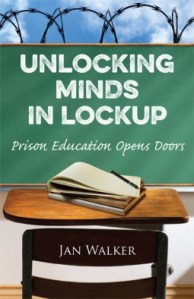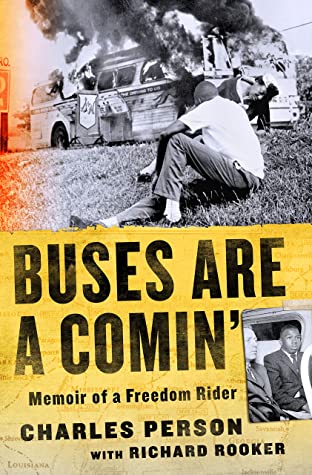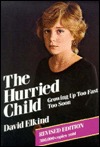 Jan Walker has spent a large part of her life developing and implementing educational programs, primarily parenting programs, for inmates, and the textbook she has written for these classes is used in prisons around the USA. This book is her account of her work with prisoners of both genders in Washington State. Most of her material addresses her work with serious offenders housed on McNeil Island, a place with a notorious reputation locally because it houses sex offenders. Thank you, Net Galley and Picata Press for allowing me to access the DRC. This book is hot off the presses, and you should read it.
Jan Walker has spent a large part of her life developing and implementing educational programs, primarily parenting programs, for inmates, and the textbook she has written for these classes is used in prisons around the USA. This book is her account of her work with prisoners of both genders in Washington State. Most of her material addresses her work with serious offenders housed on McNeil Island, a place with a notorious reputation locally because it houses sex offenders. Thank you, Net Galley and Picata Press for allowing me to access the DRC. This book is hot off the presses, and you should read it.
The primary purpose of Walker’s memoir is to let us know that 95% of those currently incarcerated will be released to their families at some point in their lives. A small percentage have their parental rights terminated, and a small percentage are in prison–really and truly–for their whole lives. Almost everybody gets out, and almost everyone goes back to their family. Wasn’t it Robert Frost who wrote that “Home is the place that when you get there, they have to take you in?” And so it is with former inmates. They’re going back to those kids. It’s in everyone’s best interest that they know how to talk to them and how to treat them when they return, as well as while they are incarcerated. She points time and again–and there is so much information and so many anecdotes in between, that it’s a good idea to bring her point back to us–to the fact that most domestic abusers were themselves abused as kids. The only way to break the cycle is to teach inmates how to take responsibility for what they have done; and how to let their children know that they have made a mistake; that prison is the consequence; and that it is not the child’s fault.
Some of this may seem obvious to you, reader, but the woman knows a tremendous amount. And as a former educator in a low income middle school, I can personally attest to the way that children internalize the things that happen to them. Some of them regard themselves as responsible for their parents’ divorces; I’ve had those kids in my classrooms. And when my first husband died in a manner both sudden and tragic, our children didn’t just think it was their faults; they knew it. They were absolutely sure. It took years of therapy to pull them out of that dark place.
Inmates are frequently semi-literate, and literacy skills are crucial to the ability to think critically. So the community college classes that seem like an absurd perk for inmates to receive free of charge, the tab paid by the tax-paying public, are actually beneficial, not only to the inmates and the children that we hope will not repeat their mistakes; they also benefit society in the long run. Better readers are better thinkers; better thinkers make better choices, and they’re better parents in most cases.
Walker has seen and heard plenty of the ugly underbelly of serious offenders’ lives, attitudes, and habits. There was more than one moment when she questioned her personal safety when the prison was short-staffed and she was alone with her classes, no one to help even within range of a good holler. She chose not to wear the gear that guards have because she wanted to differentiate her own role in her students’ minds. The gamble paid off more often than not. But she knew there were some mean, tremendously hard people there. This isn’t about that.
So don’t think she is some namby-pamby bleeding-heart enabler, because she is far from it. We know that she has seen plenty of ugly more from the way she avoids telling us the most shocking material, rather than because she flings it at us (which she doesn’t). But the anecdotes she chooses to share–with names changed for the purpose of privacy, of course–underscore her talking points, and the work is also painstakingly documented. Do you read the sources and end notes in nonfiction? I do. That part of the book says a lot about whether a writer is just referencing other writers, writing up their own opinions, or speaking as an expert. Walker is an expert.
The book starts out dry. Fight your way through that initial fifteen percent; by the time you hit the twenty percent mark, you will be really glad you stuck to it. Although I recommend this outstanding work to everyone, I recommend it especially to public school teachers, particularly those that teach at high poverty schools with large numbers of children of color. I did that for twenty years, and I have seen how deeply affecting it is for children and adolescents to have a parent in prison. Some are ashamed; a lot of them are angry or confused. Some go for a visit that involves a stiff weekend commute, sleeping in the car, and then they fall asleep at their desks on Monday. But the ones that suffer most are those that were promised a visit they didn’t get; that were expecting their parent to be released, and then the parent wasn’t; and those that are convinced their parent is innocent.
And here, though you may roll your eyes, I have to address the one little nugget that ricochets inside my brain when Walker discusses teaching inmates to own what they did and tell their children that they made a mistake; prison is their consequence, it’s not your fault. I understand the rationale, because probably 99.9% of those incarcerated (primarily on McNeil Island, which is near Tacoma, Washington, about an hour from my Seattle home) are not only guilty of what they are in prison for having done, but more offenses for which they weren’t caught. It’s also true that there are no millionaires on death row, and anyone that has read Michelle Alexander’s study of the racial disparity in The New Jim Crow, or who has followed the data produced by the NAACP and other organizations centered on #BlackLivesMatter, knows that Caucasians serve hard time far less often than people of color that commit the same crimes. But that does not mean that those that are there didn’t do the crime; they did….most of them.
At the same time, my mind kept going back to exceptional people–none of them on McNeil–that I am convinced are innocent. Should Leonard Peltier tell his children that he made a mistake, when he was framed? What about Mumia Abu Jamal? What about the lesser-known Mark Curtis, whose rape case was so clearly bogus that the local chapter of NOW endorsed his case? I know that in the last case, parole was denied over, and over, and over again because he refused to sit down and be rehabilitated for a crime he did not, did not, did not commit and would rot in prison for his entire life before he would crumble and confess to a lie just to get out of that place. He’s out now, but he sat through his whole sentence because he could not have parole by maintaining his innocence.
So although these cases are exceptions rather than rules, and I actually think Walker’s program is both strong and essential, it’s worth bearing in mind that once in awhile, someone that says they didn’t do it, really didn’t do it.
I have so many outstanding passages I flagged, so many poignant anecdotes, so much compelling evidence. I finished reading this book a week ago, but it is the really excellent ones like this that I have to mull over for awhile before I can write the review. I had 187 notes, and it was impossible to select some over others. I went back and reread them, and apart from a few paraphrased instances mentioned above, I think you’ll do better to read them in context, the way she wrote them.
The heartbreaking thing is that now that her classes and text have been adopted around the nation, they have been canceled at McNeil. Some wise ass somewhere decided that volunteers could be found to do this work. Sure, maybe once. Really sturdy do-gooders might last six months, even. But the work has to be done consistently, and you can’t fire a volunteer who phones in sick all the time, or just doesn’t show up, and those that are incarcerated need to develop a relationship with a single reliable professional instructor. I hope the Washington State legislature will reconsider this critical, valuable part of rehabilitation in our prisons. If we can’t raze those prisons to the ground, as the old folk song suggests, then let us at least make a difference for the children of those that are in them.
Highly recommended for all educators, for Civil Rights activists, and for anyone concerned about social justice. Actually, I recommend it to everyone. You can get it right now.




 The place is Mill Valley, California, the most affluent community in the USA, and yet there’s serious trouble in paradise. Although this title is being marketed as a novel for young adult readers, a lot of adults will want to read it. It’s thought provoking and a real page-turner. Thank you to Net Galley and Random House for the DRC, which I read free in exchange for this honest review. I actually finished this book some time ago, but often I find that the most interesting, complex books are ones I will want to give considerable thought to before I review them; everything I have read and thought has to gel. So I apologize to the publishers for my tardiness, but it’s not a matter of not caring; maybe it’s a matter of caring too much.
The place is Mill Valley, California, the most affluent community in the USA, and yet there’s serious trouble in paradise. Although this title is being marketed as a novel for young adult readers, a lot of adults will want to read it. It’s thought provoking and a real page-turner. Thank you to Net Galley and Random House for the DRC, which I read free in exchange for this honest review. I actually finished this book some time ago, but often I find that the most interesting, complex books are ones I will want to give considerable thought to before I review them; everything I have read and thought has to gel. So I apologize to the publishers for my tardiness, but it’s not a matter of not caring; maybe it’s a matter of caring too much. And you thought Fifty Shades of Gray was controversial. Just remember that you heard it here first: if this novel has legs and gets around, it’s going to create a lot of noise. I could almost smell the book-burning bonfires as I read the last half. And lucky me, I read it free thanks to Net Galley and St. Martin’s Press, from whom I received a DRC in exchange for this honest review.
And you thought Fifty Shades of Gray was controversial. Just remember that you heard it here first: if this novel has legs and gets around, it’s going to create a lot of noise. I could almost smell the book-burning bonfires as I read the last half. And lucky me, I read it free thanks to Net Galley and St. Martin’s Press, from whom I received a DRC in exchange for this honest review. I was cruising for something new to read, something that wasn’t yet another mystery or thriller. I ran across this title and requested it from Net Galley, then asked myself what I had been thinking! Who wants to read an entire book about eviction? What a grim prospect. I was even more surprised, then, when I opened it and couldn’t put it down. Desmond approaches his subject in a way that makes it not only readable but compelling. Thanks go to the people at Crown Publishing and Penguin Random House for approving my request for a DRC. This book is available to the public March 1.
I was cruising for something new to read, something that wasn’t yet another mystery or thriller. I ran across this title and requested it from Net Galley, then asked myself what I had been thinking! Who wants to read an entire book about eviction? What a grim prospect. I was even more surprised, then, when I opened it and couldn’t put it down. Desmond approaches his subject in a way that makes it not only readable but compelling. Thanks go to the people at Crown Publishing and Penguin Random House for approving my request for a DRC. This book is available to the public March 1.

